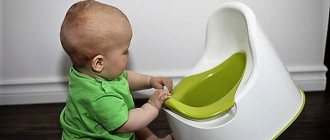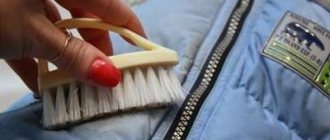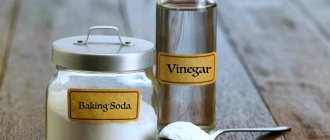Dry carpet cleaning - cleaning the carpet using a special detergent composition similar to powder. The similarities are only external; in fact, these are millions of microsponges impregnated with a special composition that can remove any stains: greasy, oil and water. The sponges absorb dirt and are then collected with a vacuum cleaner.
Dry cleaning a carpet at home is a responsible task; if you are not sure that you can get 100% results, it is recommended to contact a dry cleaner to avoid damage to the carpet.
What it is?
Dry carpet cleaning has a second name - powder, as powdered cleaners are used for cleaning. In appearance, the detergent composition of such products really resembles powder, but in fact it consists of a million microsponges.
Important! Cleaning powder is an absorbent, biodegradable cleaning composition that is spread evenly over the surface. For minor stains, use a household brush, which allows you to carefully apply the product to the carpet pile.
The microsponges included in the powder are impregnated with a cleaning composition that dissolves any type of dirt: water, oil, greasy. Small sponges pull dirt out of the carpet fibers, and then remove it with a vacuum cleaner.
Have you dry cleaned your carpet before?
Not really
Sauerkraut
Cleaning coatings with sauerkraut is a “grandmother’s” method that is still used by some housewives. To do this you will need homemade cabbage, fermented without using vinegar. Squeeze out the excess juice and scatter the cabbage over the carpet area. The pile should be cleaned with a dry brush. Debris, dust and hair will stick to the chopped cabbage. If necessary, collect it, rinse under running water and repeat the procedure. Leave it to dry and then collect it with a vacuum cleaner. This method is considered effective and is used at home.
Pros and cons of dry cleaning
The advantages of dry carpet cleaning include:
- Less risk of damage to the coating. Carpet, like any other fabric, is damaged by too much moisture. During dry cleaning, no water is used, so the coating will retain its color and beautiful appearance longer.
- Quick cleansing saves time. Carpets are made of thick fabric that need to be dried for a long time and thoroughly. Since water is not used during dry cleaning, there is no need to dry the carpet.
- Efficiency and saving money. Dry cleaning can remove any dirt from a soft surface. In addition to saving water, the process uses fewer chemicals than other types of cleaning. The result is that you save on financial costs.
- Does not harm health. During cleaning, harmful chemicals are often used, which leave an unpleasant and strong odor after cleaning. Dry cleansing products contain far fewer chemicals and are healthier.
The disadvantages of dry carpet cleaning include:
- Residues may end up on clothing. If you don't vacuum properly, you will end up with stains of cleaning product on the floor and along the edges of the carpet. You need to be especially careful if there is a small child in the house.
- Low efficiency of the method. The product cleanses the top part of the pile well, but it cannot get to its base. To do this, brushes are used to “rub” the cleaner into the carpet. If this is not done, the coating will not be completely cleaned.
How to remove unpleasant coating odor
A musty smell appears when the coating is poorly dried after cleaning. To get rid of it, you should use baking soda using the dry cleaning method. Be sure to check the smelly area for mold and dry it well after removing the soda with a vacuum cleaner. You can use a hairdryer. On hot drying, it will quickly heat the pile; It will not only dry it out, but will also allow you to understand whether the smell remains or has gone away.
Carpet cleaning tools
The main tool for carpet cleaning is a vacuum cleaner with a carpet brush. However, you may need additional sets of brushes: to remove dust, dirt, and remove animal hair and hair.
If you are cleaning wool from a low-pile carpet, use a rubber window squeegee to help reduce cleaning time.
Advice! Buy a roller with adhesive tape. Use hard brushes that do not damage the structure of the pile.
Read how to clean a rug here, a carpet here, a white carpet here.
What determines the choice of carpet cleaning method?
Thrifty housewives, taking care of the cleanliness of carpet products, try to find the most acceptable way to eliminate contamination: the most safe for health, effective and affordable. Obviously, to choose the right product, you will have to pay attention not only to the amount of dirt, the presence of complex stains, animal hair or their traces, but also to the characteristic features of a particular coating:
- product thickness;
- color.
- material of manufacture;
- pile size;
- period of use, etc.
Folk remedies for carpet cleaning
“Folk remedies” often include products that are a budget option. In addition, they show good efficiency. If you are allergic to chemicals or are afraid that traces of them may remain on the carpet, use home remedies.
Soda
Cleansing with soda is fast, effective and one of the most affordable options. The powder copes well with cleaning carpets, as it is a good absorbent from unpleasant odors and dirt, and also performs the function of disinfection.
During dry cleaning, soda is scattered over the surface of the carpet and rubbed into the pile with a sponge (or a dry cloth). The substance should be left on the coating for approximately 30 minutes, after which it should be removed using a vacuum cleaner.
To carry out wet cleaning you will need to make a cleaning agent, for this use:
- water – 5 l.;
- soda – 100 g.
Pour the resulting product into a spray bottle and then spray the carpet with it. Leave the product on the carpet for 40 minutes to allow it to work and draw dirt from the base of the fibers. This time is enough for the substance to react; after cleaning, do not forget to vacuum it.
Baking soda will help not only when cleaning the carpet, but also when cleaning the microwave.
Salt
Table salt is a common means of removing contaminants. It is used on both synthetic and natural carpets. The main feature of salt is the removal of unpleasant and “absorbed” odors.
There are four ways to remove salt stains:
- Sprinkle salt on the dirty areas of the carpet and, using a brush, rub it into the pile until the salt darkens. After this, vacuum the carpet well or use a dust blower.
- Sprinkle the salt evenly over the coating. After this, prepare a hot soapy solution. Dip a broom into it and sweep the carpet. This method will help remove stubborn dirt. However, the carpet will need to be dried.
- Salt and lemon juice will help restore the brightness of a faded carpet. Mix the mixture well, apply it to the surface, leave for 20 minutes. Then use a broom and soap solution to remove traces of the mixture.
- To remove small stains, mix: 1 liter of water, 10 g of citric acid and 1 tbsp. l. salt. Apply the resulting mixture to the carpet. It will restore saturation to the fibers and eliminate unpleasant odors.
Vinegar
Vinegar will not help remove stubborn old stains; it is better to use it to refresh the carpet, removing dust and light dirt from it. For this:
- Vacuum the carpet.
- Add 1 tbsp to 1 liter of cool water. l. vinegar.
- Take a medium-hard brush, dip it in the mixture and clean the carpet. To ensure that the carpet does not remain damp after cleaning, shake the brush thoroughly.
- Open the window to ventilate and dry the coating.
If there is a large stain on the carpet that you left the other day, use a combination of vinegar + baking soda to clean:
- Mix 5 tbsp. l. water and 1 tbsp. l. acetic acid 70%.
- Using a sponge, gently rub the mixture onto the affected area.
- Sprinkle baking soda on top and leave for 30 minutes.
- Vacuum.
Important! As the coating is cleaned, a chemical reaction will begin to occur in the solution and you will see small bubbles on the surface. Don't worry, it's the acid and alkali that are starting to interact.
The following method is suitable for enhanced action on complex oil and grease stains:
- Pour 100 g of warm water into a container, add 4 tbsp. l. vinegar, 1 tbsp. l. soda and 1 tbsp. l. washing powder.
- Quickly stir the mixture and apply it to the carpet.
- Gently wipe the heavily soiled area with a cloth or brush.
- Wait 30 minutes and then go through with a vacuum cleaner.
Before using vinegar on carpets, test a small area for the interaction between the lint and the acid.
Vinegar will help not only when cleaning the carpet, but also for cleaning the washing machine.
Tea brewing
Tea brewing will help neutralize unpleasant odors and get rid of small areas of dirt. However, it cannot be used on light-colored surfaces, as this will only ruin them.
To clean the carpet, follow a simple algorithm:
- Brew small leaf tea. It can be either black or green.
- Wring out the leaves and while they are wet, place them on the contaminated areas.
- Wait until the tea leaves dry and remove it with a broom or vacuum cleaner.
Sauerkraut
There is a main rule in this method of carpet cleaning: the cabbage must be fermented without adding vinegar, and before use it must be thoroughly rinsed to remove the characteristic odor. After this, scatter the cabbage over the carpet and use a broom or brush to “roll” it over the entire carpet.
Pieces of cabbage will collect dirt, so they need to be constantly washed while cleaning. This process should be repeated until the cabbage stops getting dirty. At the end of cleaning, vacuum the surface.
Ice
Ice will help refresh the coating and return it to its rich color, and also get rid of unpleasant odors and dust mites. Light stains can be removed from low-pile carpeting. For other products, other cleaning methods should be used.
Advice! Using ice, you can easily remove chewing gum or plasticine from the coating. Wrap a piece of ice in a plastic bag and apply it to the stained area.
After this, use any metal object, but not a sharp one, to carefully remove the remaining chewing gum. To remove old stains, use alcohol, kerosene or acetone. This article will tell you how to remove slime from a carpet.
When is it time to wash your carpet?
According to the rules of apartment hygiene, carpet cleaning should be carried out once every three months. We are not talking about using a vacuum cleaner, but about knocking out the carpet on a crossbar and then washing it. However, you will have to resort to cleaning the floor covering even more often if...
- ...there is a small child in the house (children often play on the floor; if the mother is distracted for a second, there will be a wet puddle, spilled juice or watercolor on the carpet);
- ...you have pets (a cat can mark a newly purchased carpet, and a dog can leave dirty prints after a walk);
- ...the rug or carpet lies on the kitchen floor (the appearance of greasy stains, traces of tea, wine, coffee, etc. is inevitable);
- ...you notice that the carpet gives off a musty, stale aroma.
We recommend: How to remove small and deep scratches on glass?
There are effective and simple methods for cleaning lint at home. Women can also clean a carpet using these methods, since there is no need to lift it and carry it.
Household chemicals
Still, household chemicals are much more effective than home remedies, especially in cases where you need to clean a large carpet. Firstly, it will take less time. Secondly, they cope much better with stubborn stains:
- Powder. Used for dry cleaning, both for natural and synthetic products. The only condition is that the coating must have short pile. The powdered product is easy to use: apply it to the surface, distribute evenly, rub into the pile, and then remove.
- Shampoo. A universal product suitable for any type of carpet and pile. Most often they are used to remove stubborn dirt. The shampoo is applied to the surface in the form of foam, left for 10-20 minutes, then removed with a vacuum cleaner. Despite its foaming ability, the product does not deteriorate the adhesive base of the product.
- Spray. Designed for natural materials with long pile. Intense moistening is contraindicated for such coatings; their cleaning should be done gently and delicately. The spray allows you to gently spray the product onto the surface of the carpet, and after drying it can be easily removed with a vacuum cleaner.
- Stain removers. There are universal products, but it is better to choose one that is suitable for your type of carpet. However, they are limited in the area of use - you should not apply it to the entire carpet, only to the contaminated area.
Do you use household chemicals to clean carpets?
Not really
How to clean carpet with a vacuum cleaner
The cut pile can be easily cleaned with the hard attachment of a vacuum cleaner. Additionally, the brush lifts trampled areas. Semi-long and long ones must be vacuumed, observing the direction of the pile. This will help get rid of streaks after cleaning and will thoroughly “comb” the coating. The only negative is that attachments with spirals, rubber spikes and other manufacturers’ tricks for natural carpets can greatly confuse and mat long piles, and render the looped covering unusable.
Important! Spiral brushes from a vacuum cleaner, pet slickers, hard brushes, and metal combs with hooks and loops for carpets should not be used to clean loop pile carpet.
Important Tips
- For cleaning, it is better to use a broom of medium elasticity or a vacuum cleaner with soft brushes and additional attachments.
- When purchasing a new carpet product, test its reaction on a small area of the carpet. To do this, take a piece of white cloth, apply liquid on it and apply it to the carpet (in a place that is hidden from human sight). If the fabric is slightly stained, this product is not suitable for the product.
- When cleaning, make sure that the base of the carpet does not get wet.
- For deep cleaning, use foaming products and cleaning machines that gently remove dirt without deforming the product.
- Any stains that appear must be removed immediately. Do not listen to manufacturers who say that their product will help remove even old stains.
A rug is a piece of decor that constantly catches your eye when you walk into your home or sit in a room with friends. It is very important to maintain its neat and pleasant appearance. Plus, it's not difficult. The main thing is to choose the right method and means of cleansing.
You might be interested
Carpet dry cleaning
Carpet dry cleaning
Our advantages
Deep cleaning
Before dry cleaning, we perform deep cleaning using electric knocking.
Air cleaning
Huhl's eco-system cleans not only surfaces, but the air.
HYLA equipment
Equipment and tools have certificates, conclusions and recommendations
Individual approach
Each surface has its own means, mops and fibers
Confidence
90% of customers repeat orders for more than 5 years
Honesty
We do not promise more than we can deliver.
Read about the research in our Evidence Base
What material are handmade carpets made from?
- Natural sheep wool is a warm, soft thread. To add extra shine, camel or goat fibers are sometimes added.
- Silk is one of the most expensive materials. Products with a delicate gloss are obtained from the best varieties of these fibers.
- Cotton is usually used to create the base of a rug or to highlight the contrast of its fine details.
- Viscose is considered a synthetic material, but it is obtained from natural cellulose, a derivative of wood.
- Designer carpets with adhesive backing are a stylish covering that can be matched to any interior.
Products made from different materials require special care when cleaning. For each of them we use the appropriate composition. At the beginning of the work, the technologist determines the type of fiber and contaminants. At Prima Cleaning, handmade carpets are cleaned in the most delicate way - dry.
Methods for removing various stains on carpets
In addition to various cleaning methods, which must be carried out regularly, there are ways to remove different types of stains. If a child smears plasticine on the carpet, guests spill wine, or your beloved dog puts meat juice, you need to act immediately:
- Fruit stains can be removed by a mixture of laundry soap and apple cider vinegar in proportions 1:1 and diluted in 1 liter of water. The product is applied to the stain, gently rubbed in, and then removed with clean water.
- Coffee stains can be removed with dishwashing liquid. Fresh stains should be slightly wetted, add a couple of drops of gel, rub and rinse with water. Hydrogen peroxide and even beer cope well with this task.
- long-standing traces of coffee . It is applied to the stain and left overnight, and washed off in the morning with a detergent solution.
- Grease stains are removed efficiently with a mixture of salt and alcohol (1:4). The product is rubbed several times in the direction of the pile. Not so quickly, but it is possible to remove traces of fat with chalk with talcum powder, tooth powder or starch. Pour the powder onto the stain and let it sit for a little over an hour, then vacuum the coating.
- To remove wax, paraffin, chewing gum, and plasticine, we use the cold method. We apply ice in the bag to the problem area to bring it to a solid state, and then remove it with a knife or scraper. Sometimes they use a completely opposite method - a cloth or napkin is applied to a drop of the substance, and a hot iron is passed over it. The disposal item must remain on the fabric.
- Blood stains can only be removed with cold water. We soak it, if it’s dry, soak it, take shaving cream and rub it into the stain. You can take a soda solution, hydrogen peroxide or ammonia. After a certain period of time, wash everything off with a sponge.
- Stains on carpets with a dark surface can be easily removed with table salt or lemon juice.
- Salt can also be used on red wine stains. The cleaning area must be quickly filled with wine, but only white, and moistened with cold water. The next step is salt in unlimited but reasonable quantities. We cover the stain with it, leave it and vacuum it after 15 minutes.
- To remove stains from ballpoint pens and felt-tip pens, use alcohol or a solution of glycerin and liquid soap.
If stains from drinks, food or for any other reason appear on the carpet, they must be removed immediately.











